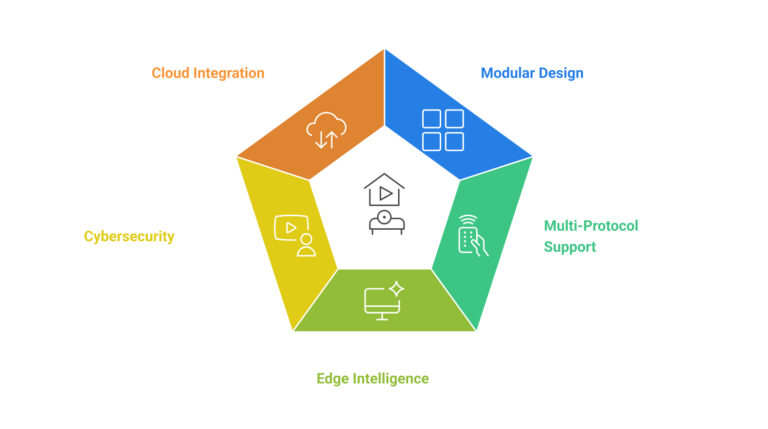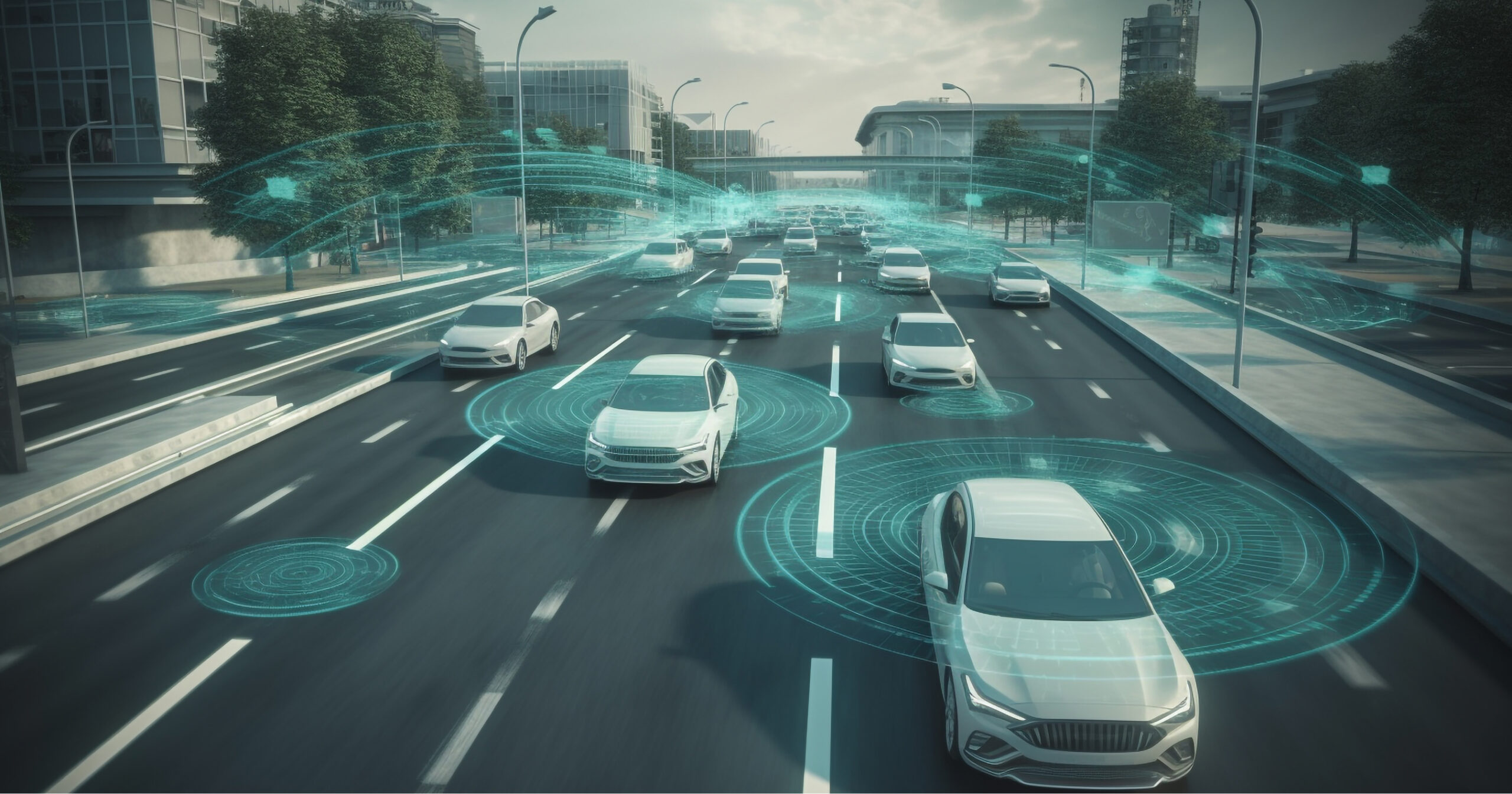The automotive industry is undergoing a major transformation, driven by rapid advancements in the Internet of Things (IoT), artificial intelligence (AI), and edge computing. Vehicles are no longer just machines; they’re evolving into intelligent, interconnected ecosystems. At the heart of this evolution is the Tessolve Embedded Reference Architecture (TERA), a robust platform built to power smart, scalable, and secure automotive IoT solutions. By enabling seamless integration across systems, TERA is helping shape the future of mobility.
The automotive IoT ecosystem demands a flexible yet powerful infrastructure for real-time data sharing for predictive maintenance. This is where TERA steps in, offering a complete and customizable embedded reference architecture that simplifies and accelerates the development of automotive solutions. In this blog, we explore how TERA is enhancing connected vehicle technologies, with a special focus on the critical role of the automotive gateway, the automotive gateway module, and the automotive gateway solution.
The Rise of Automotive IoT
The automotive industry has witnessed a growth in the use of IoT-based technologies. Modern cars are equipped with hundreds of sensors, which are continuously communicating with internal and external systems. This connectivity enhances driver safety, optimizes performance, enables autonomous functionality, and provides access to a wide range of in-vehicle services.
As data is becoming the new fuel, controlling the flow, security, and processing of such data becomes essential. This is where the gateway module in automotive applications comes into the picture. The automotive gateway serves as the central nervous system of contemporary vehicles, managing data communication among various electronic control units (ECUs), infotainment systems, telematics, and cloud platforms.
The Critical Role of Automotive Gateways
A modern vehicle can house over 70 ECUs. Managing communication among them, ensuring cyber-security, and delivering data to external systems requires a high-performance, secure automotive gateway module. This module must support multiple protocols (CAN, LIN, Ethernet, etc.), offer fail-safe mechanisms, and be optimized for real-time processing.
Traditional architectures struggle with scalability and security, especially as vehicles transition toward being fully autonomous. A well-integrated automotive gateway solution not only solves this challenge but also sets the foundation for over-the-air updates, vehicle-to-everything (V2X) communication, and seamless cloud integration.
TERA: The Backbone of Connected Vehicle Solutions
TERA (Tessolve Embedded Reference Architecture) is an open, modular, and scalable architecture tailored for embedded systems. When applied to automotive IoT, it provides a unified platform for designing and deploying smart vehicle solutions.
Key features of TERA in automotive use-cases include:

- Modular Design: TERA supports custom configurations, allowing developers to tailor the solution to specific use cases, from EV battery management to infotainment.
- Multi-Protocol Support: It facilitates seamless integration with various communication protocols used in vehicles, simplifying the development of automotive gateway modules.
- Edge Intelligence: TERA enables local processing of data at the edge, which is crucial for real-time decision-making in vehicles.
- Cybersecurity: Built-in security modules protect the integrity of the data and devices across the vehicle ecosystem.
- Cloud Integration: TERA supports secure connectivity with cloud platforms, enabling real-time monitoring, OTA updates, and diagnostics.
By integrating TERA, OEMs and Tier 1s can drastically reduce time-to-market while maintaining high standards of performance, safety, and scalability.
A deep dive into TERA: A Compact Automotive Gateway Solution Driving Smarter Edge Computing
Use Cases Empowered by TERA
1. Predictive Maintenance
With data collected from multiple sensors, the gateway module in car environments plays a critical role in identifying early signs of component failure. TERA enables seamless data aggregation and analytics, helping predict and prevent mechanical issues before they occur.
2. Smart Infotainment Systems
Today’s drivers expect smartphones on wheels. TERA allows high-speed communication between infotainment units and mobile networks, while the automotive gateway manages user data, preferences, and personalization across devices.
3. Autonomous Driving Systems
Autonomous vehicles require rapid communication between cameras, sensors, and decision-making units. TERA supports real-time data flow within the vehicle’s network, and its integration with the automotive gateway module ensures optimal performance of driver assistance features.
4. V2X Communication
As vehicles begin interacting with road infrastructure, pedestrians, and other vehicles, the automotive gateway solution becomes even more vital. TERA enhances V2X use-cases by facilitating low-latency, high-bandwidth data processing both inside and outside the vehicle.
With the rise of 5G and C-V2X, TERA’s architecture ensures ultra-low-latency data exchange, supporting mission-critical applications like cooperative collision avoidance and real-time traffic optimization.
5. AI-Driven Personalization and Synthetic Data
TERA can integrate with generative AI models to offer advanced driver personalization (based on voice, habits, and biometrics) and help generate synthetic datasets for validating autonomous features, accelerating both development and safety.
Challenges Addressed by TERA in Automotive IoT
- Interoperability: Multiple ECUs and vendors often lead to integration nightmares. TERA’s standardized interfaces reduce these barriers.
- Data Overload: By enabling on-device edge computing, TERA minimizes data congestion and offloads cloud dependencies.
- Security Concerns: TERA embeds security at every layer, from physical components to software, to ensure end-to-end protection.
- Rapid Development Cycles: TERA provides a development-friendly platform with pre-validated modules, helping teams prototype, test, and scale faster.
- SDV Alignment: TERA supports future-forward SDV architectures by aligning with standards like SOAFEE, enabling abstraction, cloud-native application development, and flexible hardware deployment.
Why Tessolve?
Tessolve envisions the automotive future as connected, intelligent, and secure. Our TERA platform is built with this vision, enabling automotive innovators to create solutions of the highest performance, safety, and scalability standards. With profound experience in silicon, embedded systems, and system validation, Tessolve is best poised to provide turnkey automotive solutions encompassing hardware, software, and tests. We collaborate with customers from idea to large-scale production, ensuring their imagination comes to life. Whether the application is in designing a tailor-made automotive gateway, adding future-forward edge functions, or fortifying vehicle network security, Tessolve is your reliable companion for making next-generation mobility a reality.
Learn How Gateway Modules Unify Modern Car Systems
Conclusion: Driving the Future with TERA
As vehicles become smarter and more connected, the demand for scalable and secure IoT infrastructure will only grow. The automotive gateway, once a simple communication bridge, is now a critical component in the connected car ecosystem. With innovations like TERA, developers can address the growing complexity of modern vehicle design while ensuring performance, safety, and future-readiness.
From enhancing automotive gateway modules to delivering complete automotive gateway solutions, TERA is poised to redefine how we build and experience connected vehicles. And with partners like Tessolve driving this innovation forward, the future of automotive IoT is not just connected, it’s unstoppable.
